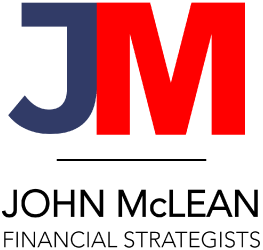MoneySmart
(ASIC)
Choosing a super fund is a bit like dating. Pick the right fund and you’ll be set for a long, happy and comfortable life when you retire. Set your sights on the wrong one and you’re in for a world of pain. Here’s how to choose the best super fund for you.
Check if you can choose your fund
Smart tip
Defined benefit funds are usually very advantageous so think carefully and seek advice before you leave one.
Most people can choose the fund for their employer’s super contributions. However, some people who are covered by industrial agreements and members of defined benefit funds don’t have this choice.
To find out if you can choose a fund, check with your employer or see the Australian Taxation Office’s (ATO’s) information on choosing a super fund.
If you do have a choice, your employer will give you a ‘standard choice form’ when you start work. The form sets out your options for choosing a super fund. You can select your own or go with your employer’s fund.
How to compare super funds
There are a few key things to consider when comparing super funds. Spend some time looking at your choices.
| Things to compare | What to look out for |
|---|---|
| Fees | The lower the better |
| Investment options | Make sure there are options that suit your needs and comfort with risk |
| Extra benefits | Your employer may pay more than 9.5% for certain super funds or if you make extra contributions yourself |
| Performance | Pick a fund that has performed well over the last 5 years – do not chase last year’s best performer |
| Insurance | See what cover is available and what it will cost |
| Service | Call the fund or browse their website to see what other services they offer |
Where to find information on different super funds
You should be able to find information on fees, investment options, benefits and performance of a super fund in its product disclosure statement (PDS), which is usually available on the super fund’s website. Alternatively, you can call the fund to request a copy of the PDS.
When comparing funds, make sure you compare apples with apples by paying attention to factors like how often the quoted fees will be charged on your account and the period the investment returns relate to. For example, a 5-year average return for the period ending 30 June may be different from a 5-year average return for the period ending 30 September.
When looking at investment returns, also make sure your comparison is based on the investment option you want to invest in. There’s no point comparing balanced investment options if you will actually choose a conservative or growth option.
Super fees and costs
All super funds charge fees and costs, though some less than others. Generally, a super fund with low fees and costs will build your super faster if it invests in the same assets. You’ll need to weigh up fees and costs against other important factors like risk, likely returns and services before you choose a super fund.
What fees and costs can super funds charge?
There are many different types of fees associated with your super fund. Super fees can be either a dollar amount or a percentage, and are typically deducted from your account on a regular basis at the end of each month or when an action is taken.
The main types of fees are:
- Administration fees – Cover the cost of operating the fund and keeping your super account.
- Investment fees – Fees for managing your investment which can vary for different investment options.
- Indirect costs – Costs paid by your super fund to external providers that affects the value of your investment. Typically, these are costs paid to investment managers.
- Advice fees – Fees for personal advice provided about your super and other investments. Your adviser may also receive fees and commissions for certain investments they recommend to you and these are not included in product disclosure statements (PDS) by the super fund.
- Switching fees – Fees for changing your investment option within the fund.
- Buy/sell spread fee – You may pay this every time you make a transaction, including making a contribution, switching and withdrawing. The fee covers some or all of the cost of transactions entered by the fund.
- Insurance premiums – The cost of insurance provided through your super fund. Many super funds have a set default insurance option. You can usually choose to change your level of cover based on your needs.
- Exit fees – A fee for leaving the fund.
- Activity-based fees – These fees are only charged if your super fund provides you with a particular service, for example, a family law split fee, where you’re charged to split your super following a separation and family law court order.
Smart tip
A 1% difference in fees now could be up to a 20% difference in 30 years.
Check your annual statement to see if you’re paying for financial advice. Make sure you are happy with what you are paying. If you are not happy or unsure about any fee, contact your super fund and consider asking how you can stop these fees being deducted.
Super funds may offer other services which may attract special fees. Refer to your super fund’s website or read the fund’s PDS for details.
Case study: Gerri chooses lower super fees

Gerri is 30 and earns $50,000 per year as a librarian. She already has $20,000 in her super. After shopping around for another super fund, she changed to one with only 1% total costs and no buy/sell spread fee which invests in similar assets. Her old super fund charged 2.5% with no buy/sell spread.
By changing to a super fund with lower fees, Gerri will have $81,000 more in her super when she retires at age 65. Her super account balance will be $336,000 instead of $255,000.

Assumptions: Calculated using the superannuation calculator, assuming 8% returns, no other fees, no insurance premiums and no changes to salary.
How to compare super fees and costs
Comparing the fees and costs on your super fund with those of other funds can help you choose a fund that’s good for you. The expected returns on your investment are also important, as well as how much risk you are taking. The best way to compare the fees and costs is by looking at the fee example shown in the PDS your super fund has sent you.
Smart tip
MySuper accounts generally have lower fees and costs and can only charge certain types of fees. See Types of super funds to find out more.
However, it does not make sense to compare funds that are quite different just on the basis of fees and costs. For example, funds that have a lot of property or private equity may have higher costs but they are likely to have different levels of risk and expected return, compared to funds that have more cash and fixed interest investments.
Some superannuation funds offer platforms for you to choose your investments. These platforms may have lower fees and costs in their PDS because these figures just cover the fees and costs of the platform. You also need to consider account fees and other costs that will be charged inside the investments on the platform’s menu.
Super comparison websites
Super comparison websites can be useful to help you compare super funds, but you shouldn’t choose your super fund on the website rating alone.
Some super comparison websites include: Canstar Cannex, Chant West, Morningstar, RateCity, SelectingSuper and Super Ratings. Note that MoneySmart has not independently verified or approved the data or ratings published by these websites. These websites are responsible for their data and publications.
All these websites have some information for free, but some also offer more detailed information for a fee.
How do super comparison websites rate different super funds?
Each super comparison website has different views on the best way to rate super funds. For example, some place the highest importance on fees. Others may prioritise investment performance and strategies. Look at the website’s explanation of their scoring system.
On some super comparison websites, the majority of super funds get a top rating. Other websites reserve their top rating for what they consider the best 10% of super funds.
How do super comparison websites measure investment performance?
One company, Chant West, calculates investment returns differently from super funds and other comparison websites.
Everyone deducts investment fees and tax from returns. However, Chant West shows investment returns before the deduction of percentage-based administration fees and any ongoing adviser commissions. Other comparison websites and super funds typically report investment returns after these costs.
Chant West’s approach means that its reported performance figures can be up to 1.5% per year higher than what the super fund would report.
No comparison service or fund deducts fixed dollar administration or member fees (e.g. $50 per year) from reported investment returns. This is because their impact depends on the balance in your super account. A $50 per year member fee is 0.5% of a $10,000 super account, but just 0.05% of a $100,000 account.
Don’t assume a top-rated fund will get above-average investment returns.
Once you have information on different funds, plug the details into the superannuation calculator to compare them.
What happens when you don’t choose a fund
If you don’t choose a super fund when you start a new job, your employer will pay contributions for you into a ‘default’ fund that they choose or as identified in an industrial award. If you don’t chose a super fund, your employer must pay your super into a MySuper account, which has lower fees and simple features so you don’t pay for services you don’t need.
Compare the default fund with at least two other funds, such as an industry fund and a retail fund including a MySuper account.
You can choose a fund at any time, but you cannot make your employer change your fund more than once a year.
If you have several super fund accounts, you can transfer the money from each into your new fund. It saves time and money in the long run to keep your super in as few accounts as possible. However, check if you will lose important insurance benefits by leaving a fund.
See Types of super funds for more information, including MySuper accounts.
How to change super funds
You might want to change super funds to:
- consolidate your super into one account
- reduce fees
- invest in a fund with better services and features
- get out of a fund that has performed poorly over a 5-year period compared to similar funds
- leave a corporate fund after resigning from your job (a corporate fund generally only accepts contributions from the employer).
You can change super funds by filling out a rollover form from the ATO and sending it to your new fund or by logging on to your MyGov account. Visit the ATO’s keeping track of your super webpage for more information.
Don’t rush to change super funds if:
- your fund performed badly in a single year;- stick to judging performance over 5 years or more
- you’re chasing last year’s top performing fund – it may not perform as well in coming years.
Video: Andrew talks about changing super funds
https://www.youtube.com/watch?v=fDqUqFr-bgc
Andrew from the MoneySmart Team has some tips about what to look out for when changing super funds.
Before you change super funds
If you’re thinking about transferring your super, check:
- if changing funds will affect how much your employer contributes
- the impact on your retirement benefit if you’re in a defined benefit fund
- that you’ve notified your employer to make future contributions to your new fund
- that you’re not losing insurance benefits you want to keep
- the exit fees of your old fund
- whether your new fund charges contribution fees.
Check your life insurance cover before moving funds
If you change super funds you may not get the same death, total permanent and disability or income protection cover that you had in your old fund. Be particularly careful if you have a pre-existing medical condition or are aged 60 or over. Seek financial advice if you are unsure.
If you have been transferred automatically from your current super fund, see Keeping track and lost super.
You hope to be with your super fund for a long time. Like dating, ask lots of questions and check out all the things that could change or go wrong before you say ‘I do’.





